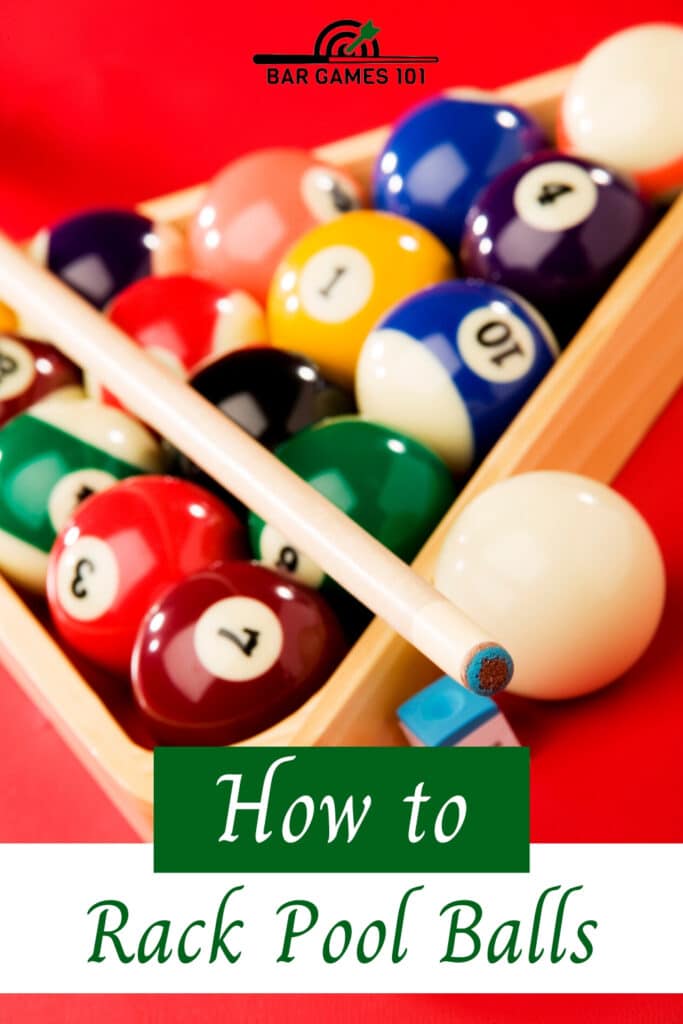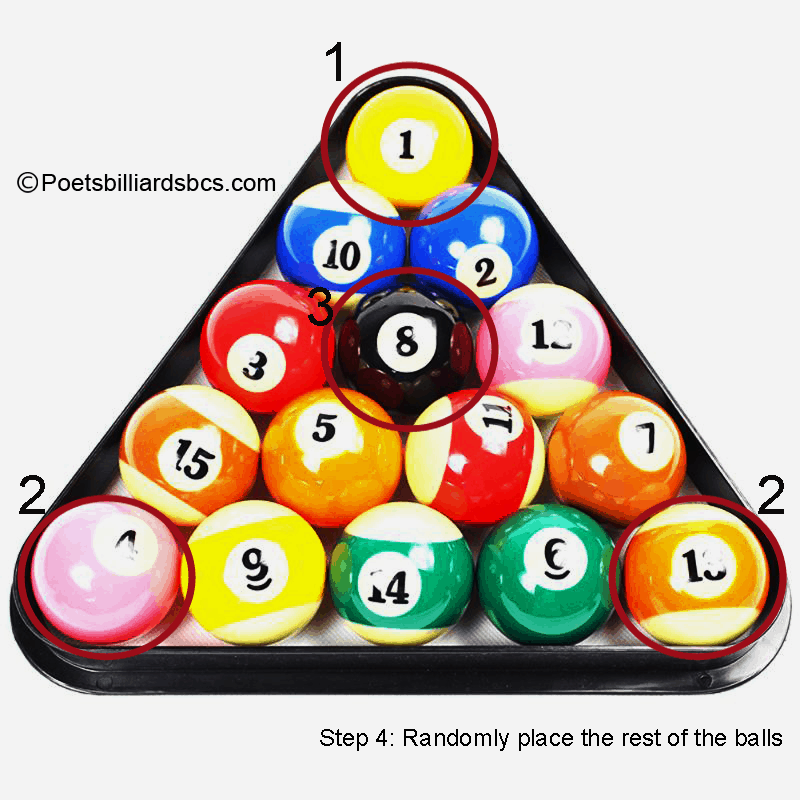Does a seemingly small detail like racking pool balls truly make or break a game? In the realm of cue sports, the perfect rack is not merely a procedural formality; it's the foundation upon which victory is built.
From the bustling atmosphere of a local pool hall to the hushed concentration of a high-stakes tournament, the art of racking pool balls is a critical element that often gets overlooked. While the intricacies of cue ball control, the strategic placement of object balls, and the mental fortitude required to succeed are often the primary focus, the initial arrangement of the fifteen numbered balls can significantly influence the flow, and ultimately, the outcome of any match. Ignoring the nuances of a proper rack is akin to starting a race with one's shoelaces untied. The potential for disaster is always present, and the path to success becomes exponentially more difficult.
| Aspect | Details |
|---|---|
| Game Type | Pool (various types including 8-ball, 9-ball, straight pool) |
| Objective | To legally pocket all object balls, often while strategically positioning the cue ball. |
| Equipment | Standard pool table, set of 15 numbered object balls, cue ball, cue stick, triangle rack. |
| Racking Procedure |
|
| Break Shot | The initial shot, aiming to spread the balls and pocket at least one. Strategic break shots are crucial for gaining an early advantage. |
| Tactical Considerations |
|
| Fouls |
|
| Winning the game | Successfully pocket all of your assigned object balls and legally pocket the 8-ball. |
| Reference | Billiards.com |
The principles that guide the construction of a perfect rack are consistent, irrespective of the specific variation of pool being played. Whether one is engaged in a game of straight pool, requiring the strategic potting of balls in sequence, or the more familiar 8-ball, where the objective is to pocket either the stripes or solids, the goal is always the same: to create a rack that, upon the break shot, allows for a favorable spread of the balls, providing opportunities for successful shots and advantageous positioning. The fundamentals remain the same; the execution will need to be carefully considered and will depend on the game being played.
The initial step in perfecting the rack involves a thorough assessment of the playing surface. Ensuring the table is level and clean is paramount. A level table guarantees a fair break, while a clean surface minimizes the chances of the balls being affected by debris or imperfections, which may affect ball rolls.
The physical act of racking the balls requires a precise understanding of the proper placement and arrangement. The standard configuration involves using a triangular rack to position the fifteen object balls tightly together, forming a compact triangle. The apex ball, often the solid 1-ball or another designated ball depending on house rules, should be placed on the foot spot, a small circular marking on the table. The remaining balls must be arranged with a strategic mix of solids and stripes to increase the randomness of the break and create a balanced spread across the table. The eight-ball, is the black ball, and is positioned in the center of the rack and should not be on the corner.
Beyond the specific placement of each ball, achieving a tight rack is the ultimate goal. The balls should be packed as closely together as possible, eliminating any gaps or spaces between them. This tightness is critical, as it ensures that the balls will scatter effectively upon the break shot, minimizing the risk of a frozen rack where balls remain clustered together, thus hindering play. This can be achieved by firmly pressing the balls into the rack while setting it up, and then gently tapping the balls down with the fingers.
Various tips are frequently used to help form the best rack, like using pool gear thats in good shape. Using good quality equipment will help form the best rack, and also provide a great playing experience. Some people also lock the balls in place while racking. This can be done by manually pressing the balls together.
Mastering the art of racking is not merely about rote memorization of a particular arrangement; it is about understanding the principles that underpin a successful break. It demands a keen attention to detail, a commitment to precision, and a willingness to refine one's technique. Furthermore, many rule sets stipulate that the balls should be placed as close to each other as possible, without leaving any gaps between them. Failing to adhere to this practice is not just poor sportsmanship; it can result in a poorly distributed break and negatively impact your chances of winning.
From the initial placement of the apex ball to the final arrangement of all fifteen object balls, every stage of the racking process demands careful consideration. And although it may seem like a minor detail, this step profoundly affects your performance. Every aspect contributes to a solid game. By following these methods, one can consistently create the perfect rack, setting the stage for competitive and enjoyable matches.
Now, let's explore how to arrange the balls and enhance your pool game. This will allow you to understand how to rack the balls and increase your chances of winning. This simple step can elevate your chances of success.
The main goal of the game is to pocket the balls into the pockets using a cue ball. To set up a game of pool you need to arrange the balls in a specific way. There are 16 balls in total, and they all have numbers on them.
When racking pool balls, use all 15 balls and alternate the stripes and solids. If you are looking to improve your pool game, it all starts with knowing how to rack the balls properly. Make sure you have a standard triangle rack and a full set of pool balls.
A cue rack is a key component of a functional and enjoyable billiards setup. Use a cue rack to store pool sticks, cue ball polish, and other essentials within reach.
Arranging pool balls in a triangle rack is essential for a successful game. Other balls should be carefully placed behind the apex ball such that they appear closely pressed together. Now that you understand the basic rules, lets now get specific.
The fundamental component of racking pool balls is, of course, the balls themselves. A standard set of pool balls consists of 15 object balls, numbered 1 through 15, and the cue ball.
To rack the balls for a game of pool you need to get all the balls in the correct position, packed tight and positioned correctly over the dot.
The art of racking the balls may seem like a minor aspect of the game, but it can profoundly affect your performance. When done correctly, it sets the stage for a competitive and enjoyable game. The perfect rack can enhance your game and celebrate your favorite teams in style. Now, before we call it a day, heres a quick recap of how to rack pool balls.



Detail Author:
- Name : Major Hudson
- Email : xrogahn@hotmail.com
- Birthdate : 1975-08-12
- Address : 424 Nolan Club Hermistonborough, WA 57570
- Phone : +1.484.318.0259
- Company : Padberg-Renner
- Job : Aircraft Mechanics OR Aircraft Service Technician
- Bio : Aut harum recusandae deleniti minima illum quia quam ullam. Aliquid debitis et adipisci vel reiciendis ea. Consequuntur ipsa et nesciunt voluptas. Distinctio sint et voluptas dolor accusamus quis.